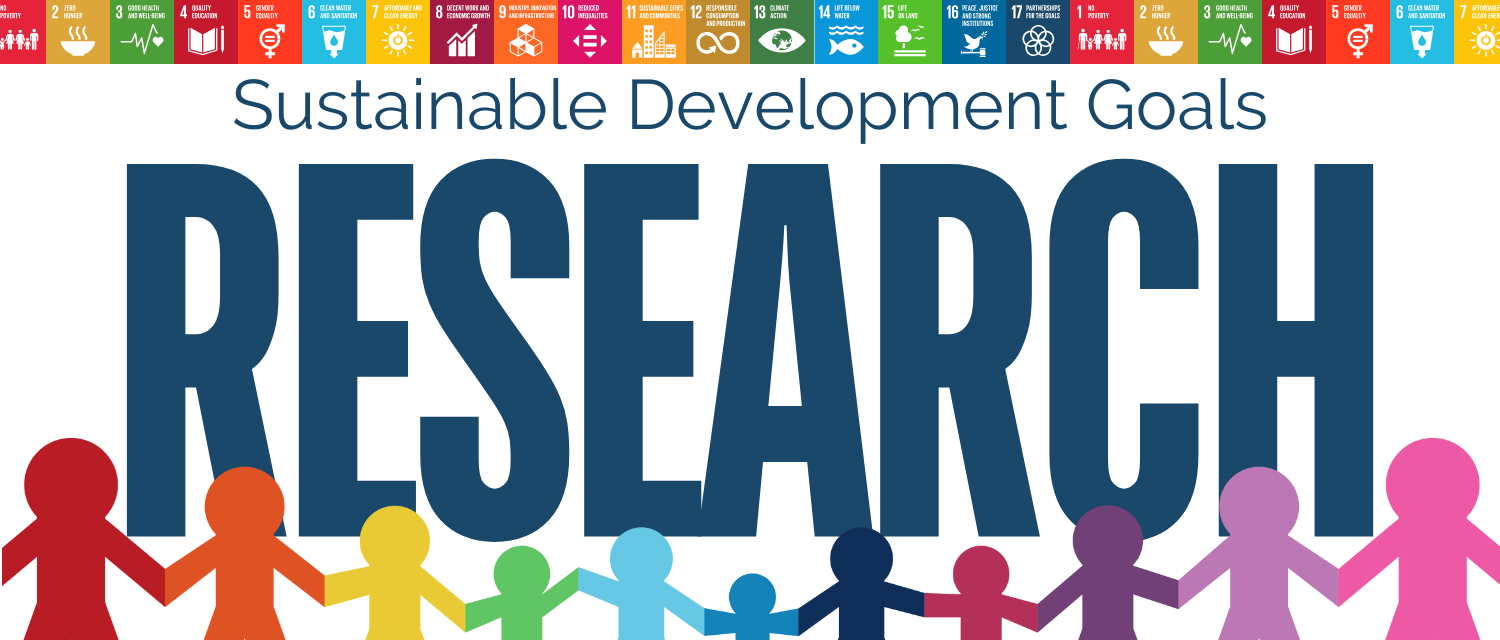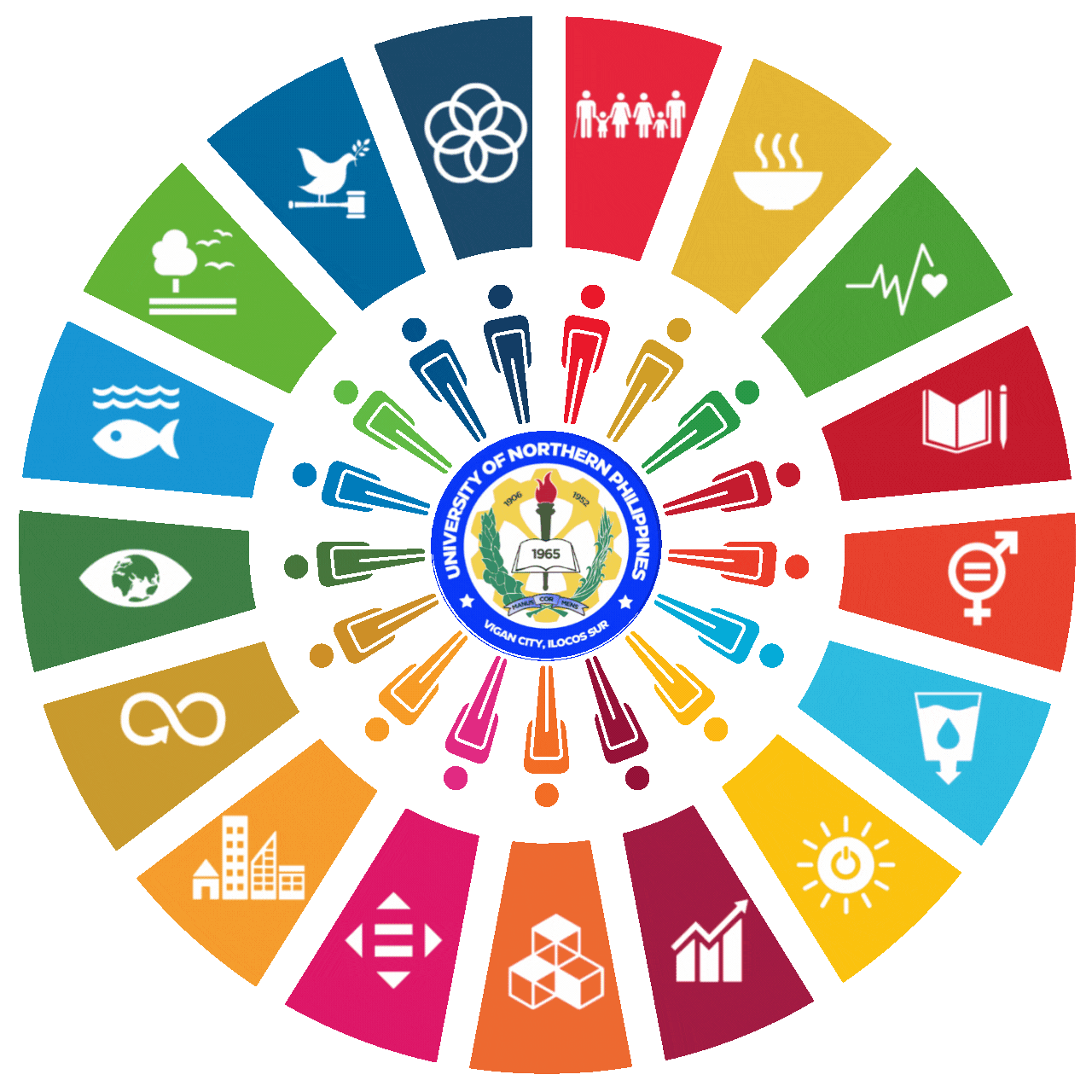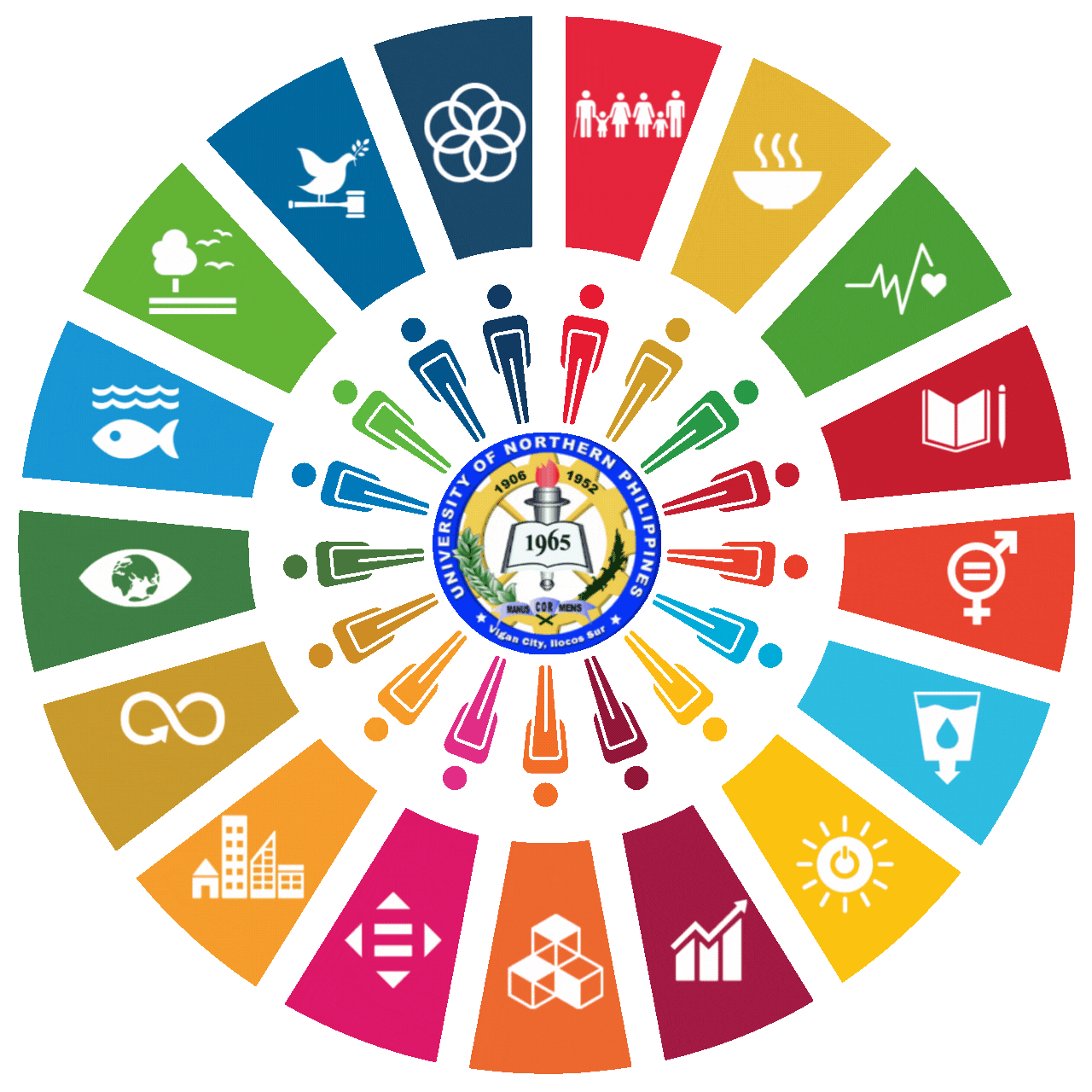

SDG 4 - QUALITY EDUCATION
The University of Northern Philippines (UNP) demonstrates a strong commitment to Sustainable Development Goal 4: Quality Education through its comprehensive approach to providing inclusive, and equitable quality education, and promoting lifelong learning opportunities for all.
Proponents: Edmar M. Paguirigan and Marjorie Janel R. Paguirigan
Abstract: In the Philippines’ K to 12 curriculum, primary-grade mathematics modules have been developed in the vernacular language, aligning with the Department of Education’s (DepEd) Mother-Tongue Based Multilingual Education (MTB-MLE) policy. However, these materials are not suited for learners in some elementary schools, including the University of Northern Philippines-Laboratory Schools. Thus, this study aims to describe and develop a valid Grade 1 Module in Mathematics using the 5E Learning Model. This research utilized a descriptive-research and development (R&D) method divided into three phases: planning, designing/developing, and evaluation. The topics were based on the Most Essential Learning Competencies (MELC), prescribed by the DepEd. Using the 5E Learning Model (Engage, Explore, Explain, Elaborate, Evaluate), the parts of the module were constructed (Link to fun, Let’s start, Let’s Study, Let’s do it, Challenge Yourself) and the English language was used as a medium. The experts evaluated the module, unanimously affirming its validity—based on objectives, content, activities, assessment, and references—and its high quality in terms of relevance, clarity, appropriateness, usefulness, organization, structural design, and timeliness, deeming it an exceptional resource that the learners may use and has the potential to be an effective instructional module for both face-to-face instruction and flexible learning modality. It can help learners understand the basic principles of addition and subtraction while appreciating the module’s visually appealing design and diverse elements.
Keywords: instructional material; mathematics education; module development
Proponents: Allan Q. Guillermo
Abstract: Objective: The objective of this study is to develop and evaluate the acceptability of an addressable fire alarm system trainer designed to enhance the skills and preparedness of emergency responders and training institutions, thereby contributing to Sustainable Development Goal 4 (SDG 4) – Quality Education. Theoretical Framework: This research is grounded in experiential learning theories which emphasize the value of hands-on experiences for comprehension and skill acquisition. Studies by Esu et al. (2016) and Taupa (2017) underscore the significance of resource availability in technology education, particularly in emergency response training. Method: A descriptive research design was employed to assess the trainer’s acceptability. The study involved the design and construction of the addressable fire alarm system trainer and utilized expert evaluations for data collection on usefulness, effectiveness, functionality, safety, and social acceptability. Results and Discussion: The findings revealed that the trainer received high acceptability ratings across all indicators, with overall means of 4.73 for usefulness and 4.84 for functionality. Experts acknowledged its potential in educational settings, underscoring the importance of integrating advanced fire safety technologies into training curricula to promote quality education (SDG 4). Research Implications: The implications of this research emphasize the necessity of innovative training solutions in fire safety education, suggesting that the developed trainer can significantly improve instructional practices in technical education fields. Originality/Value: This study contributes to the field by delivering an innovative educational tool that addresses the gaps in training resources for fire safety systems. Its unique design and framework provide a model for similar initiatives in vocational education, highlighting the value of practical training in preparing skilled emergency responders.
Keywords: fire alarm system, training evaluation, instructional device, educational tools, SDG 4, quality education, Sustainable Development Goals (SDG)
Proponents: Jeffrey Galangco, Rhosechelle Riboroso and Christian Domondon
Abstract: The development of instructional materials is seen as a vital educational goal for addressing the needs of all students and ensuring quality education. As educational paradigms evolve, there is a growing emphasis on creating resources that engage, empower, and cater to the individualized learning of students. The study endeavored to develop and evaluate Modules in Precalculus for Grade 11 STEM students. The study employed the research and development (R&D) design and descriptive research method, utilizing the evaluation rating sheet for print resources adopted from the Department of Education. The passed-notpassed method was used to determine the extent of validity of the developed modules. Five experts in the field of mathematics and language evaluated the learning material, and the data were analyzed using frequency count, mean, and summation. The newly developed learning material in Precalculus wraps up eleven (11) modules. The presentation of the topics embraces the 5E instructional model in achieving the targeted learning outcomes grounded on the Most Essential Learning Competencies (MELCs). As a result, the Modules in Precalculus for Grade 11 STEM students exhibited remarkable substance and met the standards and requirements of the evaluation process. The developed modules augment the existing learning resources used for teaching the subject in Senior High School.
Proponents: Christian Domondon, Widia Rini, Syaharuddin, Zaid Mohammed Fadail, Sultan Senan Mahde and Abdillah
Abstract: Traditional knowledge plays a crucial role in preserving biodiversity and public health and can be utilized to teach mathematical concepts. This study aims to examine the dynamics of traditional knowledge in the context of mathematics through a literature-based approach. Traditional knowledge is often overlooked in the development of modern mathematics curricula, yet it holds significant value in understanding the origins and mathematical thinking across various cultures. Through a qualitative approach and Systematic Literature Review (SLR) method, this research investigates the participation and influence of traditional knowledge on the development of mathematical concepts. Analysis is conducted on various scholarly works, literature, and journals to understand how traditional knowledge informs and shapes current mathematical practices. The findings of this study reveal that traditional knowledge plays a role in the development of mathematics through ethnomathematics, which utilizes mathematical concepts within different cultures, and through mathematical activities in traditional games, providing an alternative foundation in elementary school mathematics education, and a strong connection between mathematics, traditional culture, and mathematics learning. Our result of this paper can provide new insights into how traditional knowledge remains relevant in the context of modern mathematics education and provide a basis for further research in enriching inclusive and culturally-based mathematics learning approaches. This research has important implications for appreciating and understanding the diversity of mathematical knowledge worldwide
Keywords: Ethnomathematics, Traditional Knowledge, Mathematical Concepts
Proponents: Joseph Taban and Edi Supriyadi
Abstract: There are significant limitations in the current study on CT+STEM addressing the gaps noted in the existing literature. The study is driven by the lack of research on underrepresented students in college STEM courses, the inclusion of CT in STEM education at the entry level, and the insufficiency of teacher training programs that concentrate on integrating computational thinking into STEM classrooms. It aims to fill the knowledge gap about how CTs' professional experience influences their attitudes and practices. The study acknowledges the necessity of empirical research to explore the balance between the widespread use of critical thinking and the distinct characteristics of scientific representations, a significant obstacle in educational planning. The research utilizes bibliometric analysis to cover the period from 1978 to 2023, showing a steady yearly growth rate of 7.22% in the CT+STEM sector. The collection consists of 241 documents from 127 scholarly sources, highlighting collaboration trends and worldwide relationships in CT+STEM research. The study highlights important publications, authors, affiliations, and highly cited papers while also recognizing potential bias and the quantitative character of the investigation. The study has important implications for education, industry, and problem-solving in the digital era. The article suggests further research to investigate qualitative aspects, methodologies, and teaching strategies to enhance the development and influence of CT+STEM in the evolving field of education and technology.
Keywords: Computational ThinkingScopusSTEM
Proponents: Diana C. Caoile and Clarita P. Pere
Abstract: The professional development of teachers is essential for effectively implementing the K to 12 Basic Education Program in the Philippines. Learning Action Cells (LACs) provide a collaborative platform for teachers to enhance competencies in addressing diverse learners' needs, integrating 21st-century skills, and contextualizing the curriculum. This study examined the utilization of LAC session contents by 42 Junior High School Science teachers in Vigan City and its impact on teaching practices. Using a mixedmethod design, data were collected through surveys and interviews. Quantitative data were analyzed statistically, while qualitative data underwent thematic analysis. The study focused on Learners' Diversity and Student Inclusion, Content and Pedagogy, 21st-century Skills and ICT Integration, Assessment, and Curriculum Contextualization. Findings revealed high utilization of LAC content across all areas, with Learners' Diversity being the most utilized. Teachers’ educational attainment and position significantly influenced their LAC content utilization, with correlations noted between these factors and session attendance. Key outcomes included enhanced subject matter knowledge, improved pedagogy, and refined assessment strategies. A proposed action plan emphasized inclusive teaching methods, curriculum localization, digital literacy, and contextual integration. Recommendations include encouraging postgraduate studies, active participation in LAC sessions, and ICT-related training for teachers. Administrators are advised to monitor LAC utilization, provide comprehensive guides, and support professional growth. Broader studies are recommended to validate these findings and further explore LAC's impact on educational practices. This study underscores the pivotal role of LACs in fostering professional development and improving teaching efficacy.
Keywords: Learning Action Cell, LAC Sessions Contents, Science Teachers
Proponents: Gerald R. Severino, Elmer T. Cabatic and Mico M. Molina
Abstract: Play is essential to childhood development, fostering physical, emotional, cognitive, and social growth. However, the role of parents in facilitating and perceiving the developmental benefits of play remains underexplored. This study explored parents' perceptions of the role of play in their children's development, focusing on physical, emotional, cognitive, and social domains. Conducted from December 2021 to March 2022, the research utilized a descriptive-quantitative design and involved 50 parents of children aged 4–7 from Cabugao and Narvacan, Ilocos Sur. Data were collected using a researcher-made questionnaire and analyzed through frequency and percentage. Results revealed that children engaged in various play activities, such as chasing bubbles, imaginative role-play, and building blocks, which parents observed to enhance motor skills, emotional resilience, problem-solving abilities, and social interactions. Parents emphasized providing opportunities for unstructured, child-led play to support holistic development. The study recommends that educational institutions and healthcare professionals conduct workshops for parents and caregivers on the developmental benefits of play. Additionally, future research should explore children's direct experiences to validate and complement parental observations.
Keywords: Role of Play, Children, Development, Parents, Descriptive-Quantitative, Ilocos Sur
Proponents: Janice DC Estrada and Marlow T. Pacapac
Abstract: his descriptive and correlational study provided valuable insights into implementing Community-Based Treatment and Care Services in the Municipality of Magsingal, Ilocos Sur, a crucial initiative for addressing substance use issues. By evaluating the effectiveness of programs for Persons Who Used Drugs (PWUDs), measuring their satisfaction, identifying challenges faced during implementation, and proposing solutions, the study contributes to improving treatment outcomes and policy development. The findings can inform local efforts to enhance rehabilitation services, support recovery, and prevent relapse, ultimately benefiting the community and promoting long-term well-being for PWUDs.The study's respondents were PWUDs who had graduated from the Community-Based Treatment and Care Services in Magsingal and were selected through purposive sampling. Data were gathered using a questionnaire checklist and analyzed using frequency count, percentage, weighted mean, and Bivariate Correlation Analysis. The findings reveal that a significant percentage of respondents are aged 41-50 years, male, married, have completed high school, are unemployed, had used drugs for less than one year before treatment, and primarily abused shabu. Based on these findings, recommendations include collaboration with organizations such as DSWD, universities, DepEd, DOLE, NGOs, PDEA, and PNP to prevent relapse, facilitate early recovery, and promote gender-specific interventions. It is also suggested that job preparedness programs be implemented to equip PWUDs with the skills and credentials needed for stable employment and optimize scheduling to ensure reliable and accessible delivery of CBDRP programs.
Keywords: Community-based, PWUDs, drugs, rehabilitation, Relapse
Proponents: Blessy Mae L. Lopez, Rhodelyn T. Samulde, Janella Angelica R. Navarro, Regan L. Regua and Mark Angelo C. Reotutar
Abstract: This study validated and evaluated the effectiveness of a developed Triangle Trigonometry E-Module on the mathematical performance of forty Grade 9 students at the University of Northern Philippines-Laboratory High School during the 2020-2021 academic year. The research employed a one-group pretest-posttest design, utilizing a 30-item validated test to assess student performance. Validation by experts rated the E-Module highly valid across content objectives, clarity, relevance, design, suitability, and testing. Results revealed a significant improvement in students' mathematical performance, with pretest scores rated Poor and posttest scores rated Very Satisfactory. This demonstrates the E-Module's effectiveness in enhancing students’ understanding of trigonometric concepts. The study highlights the potential of e-modules as effective educational tools, especially in remote or blended learning contexts. Recommendations include adopting the Triangle Trigonometry E-Module across similar curricula, integrating e-modules in other subjects, and conducting remedial sessions for low-performing students. Future research is encouraged to validate these findings across different educational settings and subjects
Proponents: Christian David C. Alconcel and Randolf M. Agup
Abstract: This study presents an experimental analysis of water jet dynamics using an improvised jet impact apparatus. The research encompassed the design, construction, and testing of the apparatus to evaluate its performance. Testing involved determining and comparing theoretical and experimental impact forces under various experimental setups. These setups included different masses (70.0 g, 100.0 g, 150.0 g) and target vanes with varied angles of impact (90°, 29.5°, 180°). The target vanes were designed with flat, conical, and hemispherical surfaces. The results indicated that the improvised apparatus achieved an overall percentage error of 17.39% in determining impact forces. Among the configurations, the hemispherical target vane combined with a 100 g mass-produced the most accurate results, with a 7.04% error. The highest percentage error of 31.6% occurred with the flat target vane and a 70 g mass. These findings suggest that while the apparatus can yield precise results under optimal conditions (e.g., hemispherical vane and 100 g mass), it may produce less accurate measurements in other configurations. Despite its limitations, the improvised jet impact apparatus demonstrates utility as a teaching and learning tool for exploring fluid dynamics, particularly the behavior of water jets. It provides an accessible means of demonstrating fundamental concepts, even if not suited for experiments requiring high precision. Overall, the apparatus serves as a valuable resource for introducing students to the principles of jet impact and fluid dynamics.
Keywords: fluid mechanics, fluid dynamics, water jet impact, improvised apparatus, improvisation
Proponents: Amiel Christoper Queddeng and Mary Loreen Cayabyab
Abstract: The study described the weave patterns used in abel products like slippers, face masks, and pouch bags and developed weaving codes in designing these products. The coding theory, an application of number theory and the use of the binary decimal codes, was used and applied to describe and develop the codes of the designs in the Abel Iloko Products in Ilocos Sur. The result guided the researchers in generating weaving codes for the designs of slippers, face masks, pouches, and bags. The study employed descriptive and developmental research designs. It explored the different weave patterns found in the Abel Iloko products. It is developmental because the study aims to generate weaving codes based on the patterns used in the production of Abel Iloko. Moreover, the results provide new research directions and ideas for innovation. Based on the findings, the following are recommended: Instructional medium may be used as a medium of learning for students in Ilocos Sur, where learning could be made more varied, and students get to know their culture and preserve the culture of Abel Iloko products. Researchers may use the results as a basis for future research to develop a warp-weighted loom simulation so that historical weaving processes may be explored and shared to generate new fabrication possibilities.
Keywords: Generate, weaving, code, abel, binary


















